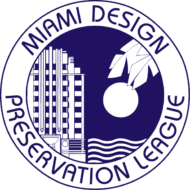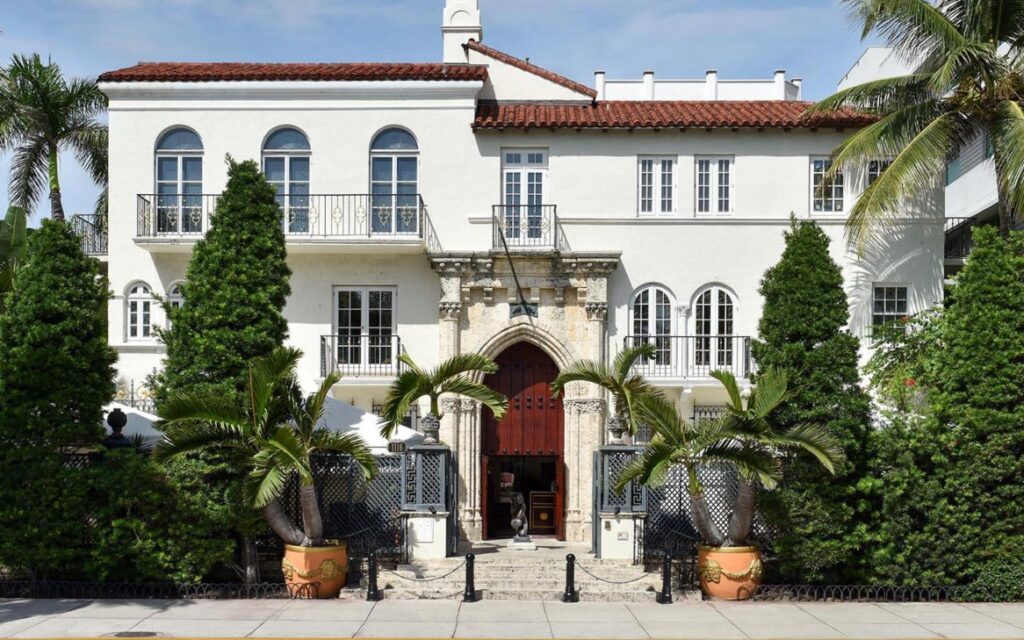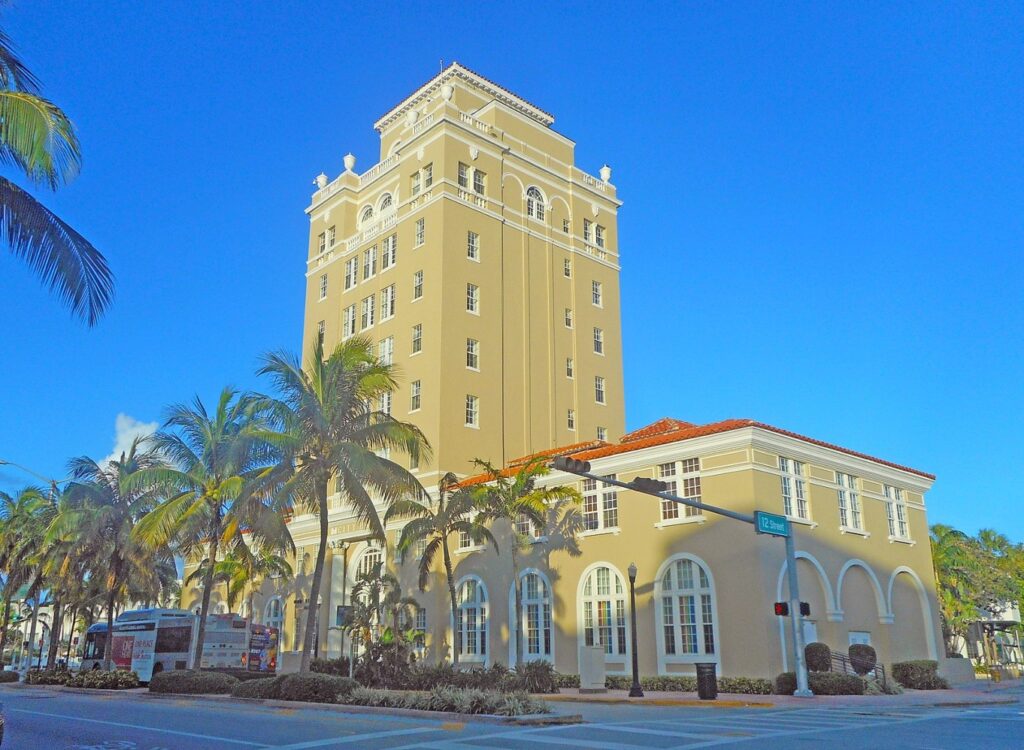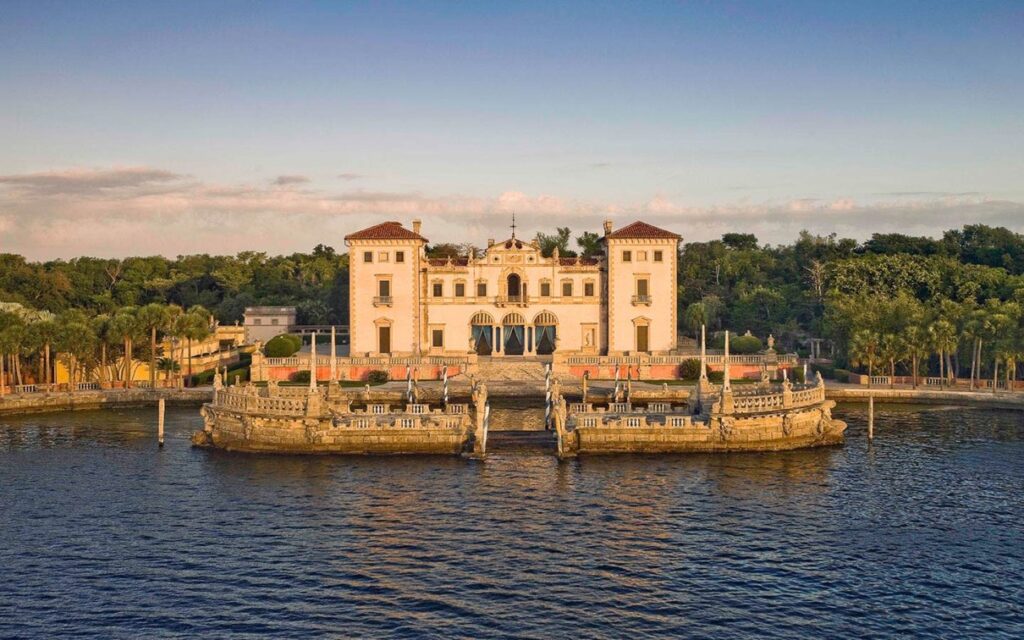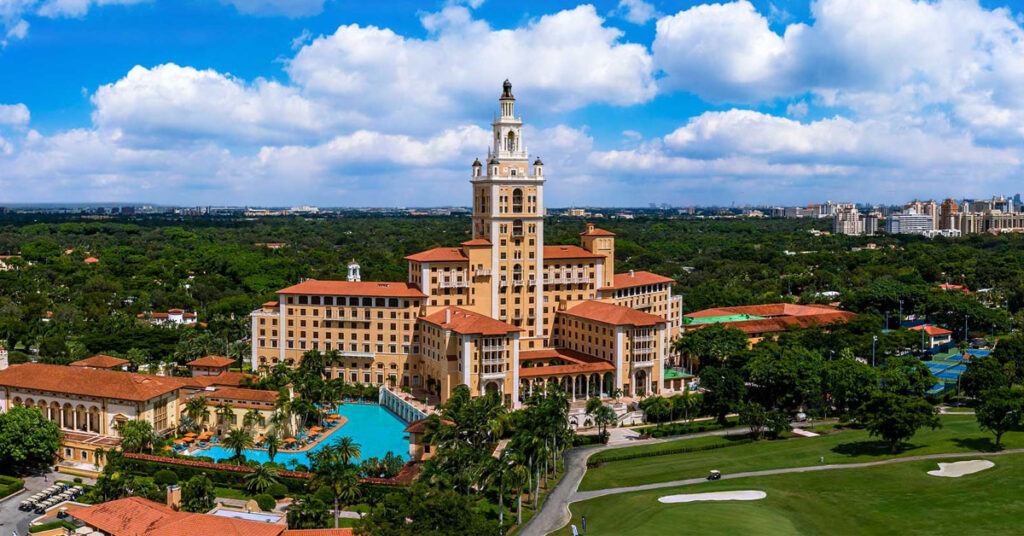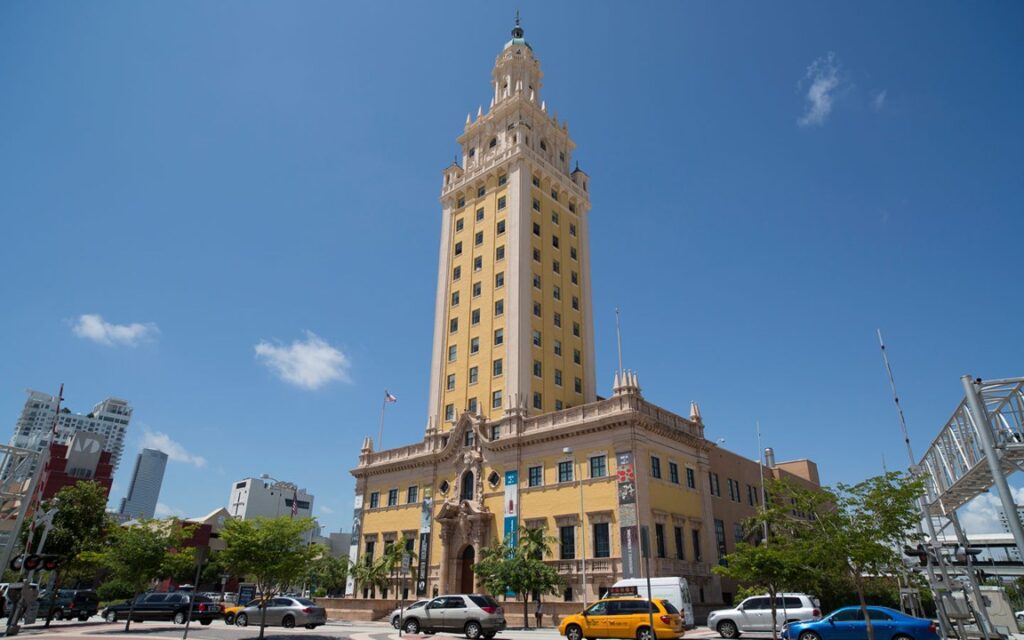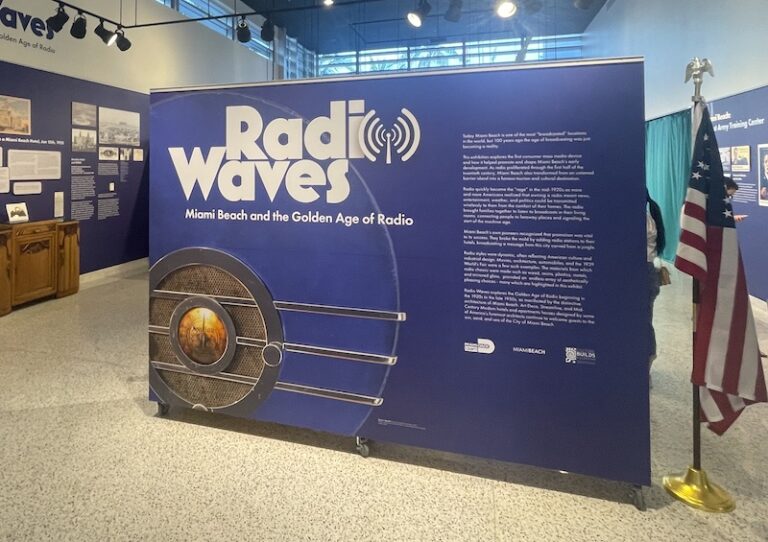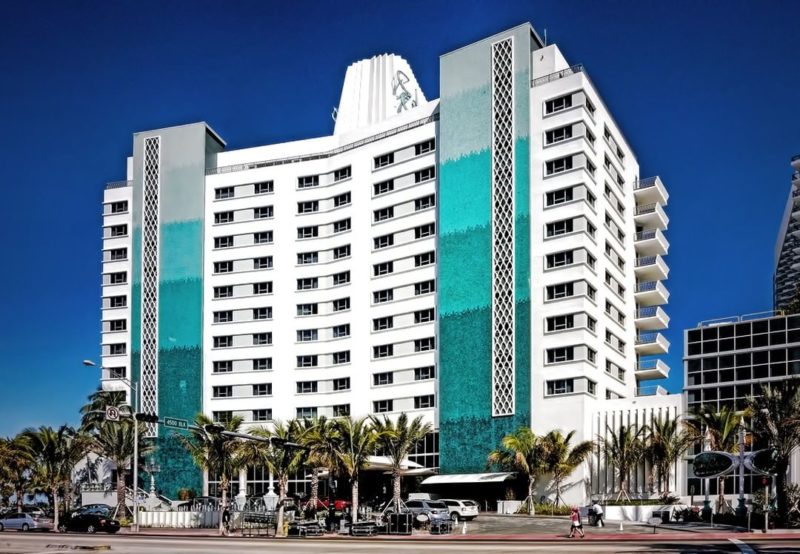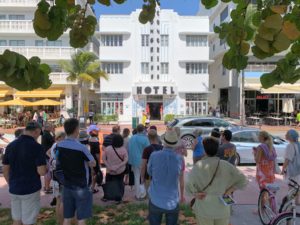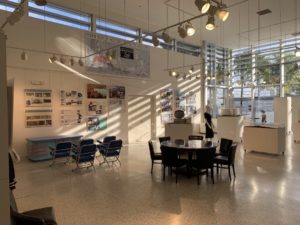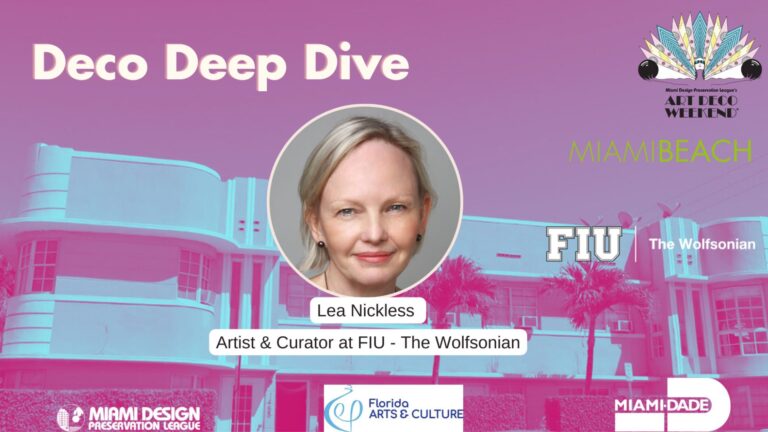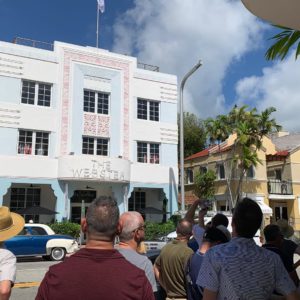Mediterranean Revival is a style of architecture that borrows inspiration from the classical architecture of Mediterranean countries like Italy, France, and Spain.
This style became widely popular in Florida and California during the 1920s when real estate was booming and many wealthy families built seaside and coastal luxury homes resembling those in the Mediterranean.
Aside from its classical European inspiration, the style also borrows from Moorish architecture.
You can spot it in some of Miami’s most historic and rustic buildings. Some of the style’s defining features are clay tile roofs, stucco walls, arched windows, and cupolas or domes.
Here are five stellar examples of Mediterranean Revival landmarks across South Florida.
Villa Casa Casuarina (1116 Ocean Dr)
Architect: Alden Freeman, 1930
This iconic property on Ocean Drive is best known as the Versace Mansion. The site was the home of Gianni Versace from 1992 until his untimely death in 1997. It was built in 1930 and its design was inspired by the Alcazar de Colon in Santo Domingo, the oldest house in the Western Hemisphere.
Now a luxury boutique hotel, the Villa Casa Casuarina features a courtyard, statues, balconies, and an opulent mosaic pool.
Old City Hall (1130 Washington Ave)
Architect: Martin L. Hampton, 1927
Miami Beach’s former City Hall building is a charming example of Mediterranean Revival. This is one of the most historic buildings in Miami Beach and was home to municipal government from 1928 to 1977.
At its prime, the nine-story building symbolized optimism following the Florida land boom in the 1920s. It featured an observatory on its ninth floor, where visitors could catch scenic views of the city, the Atlantic Ocean, and Biscayne Bay nearby.
Villa Vizcaya (3251 S Miami Ave)
Architect: F. Burrall Hoffman, built between 1914 and 1922
The former estate of James Deering and now home to Vizcaya Museum and Gardens, this villa is one of the most lavish examples of Mediterranean Revival in Miami.
Its design was conceived as a modern and subtropical interpretation of 18th-century Tuscan and Venetian villas. Now a museum, the estate features many lush gardens and beautiful views of Biscayne Bay.
Biltmore Hotel (1200 Anastasia Ave)
Architect: Schultze & Weaver, 1926
This historic and elegant hotel in Coral Gables is a stunning example of the Mediterranean Revival style, inspired by Seville’s Giralda Tower.
Built in 1926, the hotel thrived during the jazz age as a glamorous destination for the affluent. The Biltmore hosted many noteworthy guests including President Franklin D. Roosevelt, Judy Garland, Bing Crosby, and even Al Capone.
The luxurious hotel’s design stands out for its architectural ornaments, including its colonnaded lobby, hand-painted ceiling beams, open-air courtyard, fountain, and balconies with balustrades.
Freedom Tower (600 Biscayne Blvd)
Architect: Schultze & Weaver, 1925
Completed in 1925, this 17-story building originally served as the headquarters for the Miami News newspaper. In the 1960s, it was used to process and document refugees from the Cuban Revolution.
Like the Biltmore Hotel, its design was inspired by the Giralda Tower in Seville, Spain. The building currently serves as Miami Dade College’s Museum of Art + Design, and it recently closed for a state-funded $25 million renovation.
